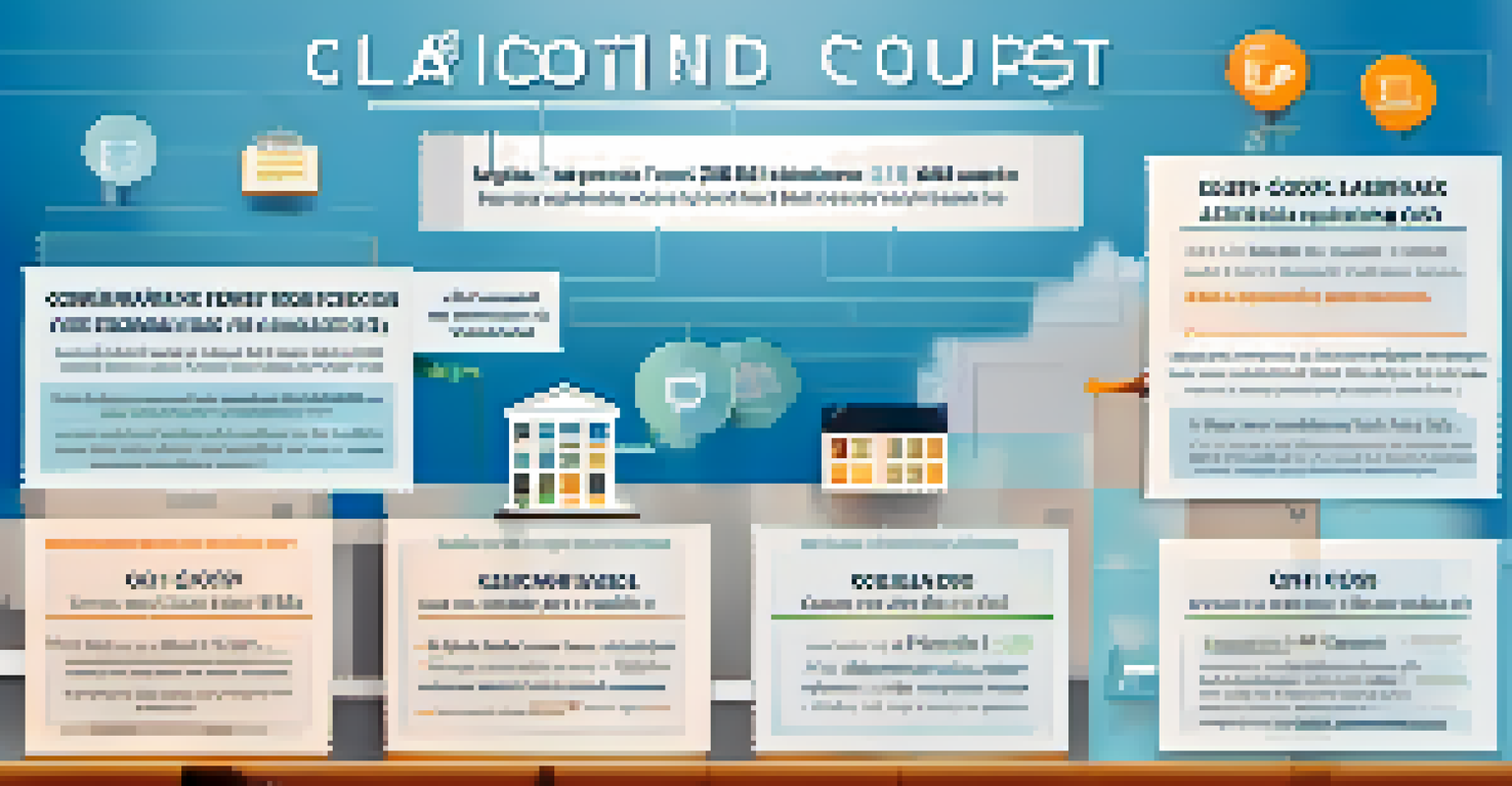Closing Costs: Understanding Loan Estimate Forms

What Are Closing Costs and Why Do They Matter?
Closing costs are the fees and expenses you pay when finalizing a real estate transaction. They typically cover a range of services, including loan origination, appraisal, title insurance, and more. Understanding these costs is crucial because they can significantly affect your budget and the overall affordability of your home purchase.
The more you know about your closing costs, the more control you have over the homebuying process.
These costs can vary widely based on factors like location and loan type, so knowing what to expect can help you plan better. For example, closing costs might total anywhere from 2% to 5% of the home's purchase price. Being prepared can prevent any surprises that might arise on closing day.
Moreover, a clear grasp of closing costs can empower you during negotiations. If you're aware of these expenses, you can make informed decisions and potentially negotiate with the seller to cover some of the costs, making your homebuying journey less stressful.
Introduction to Loan Estimate Forms
A Loan Estimate form is a standardized document that outlines the key details of your mortgage, including the estimated closing costs. This form is designed to help consumers compare offers from different lenders easily. It's typically provided within three business days after you apply for a loan.

The Loan Estimate breaks down various fees associated with the mortgage, giving you a clearer picture of what you’ll be paying. For instance, it includes costs like origination fees, title insurance, and pre-paid taxes, which can help you assess whether you’re getting a fair deal. Understanding this form is essential in making an informed decision.
Understand Closing Costs
Knowing the range and specifics of closing costs can significantly impact your budget and homebuying decisions.
Additionally, the Loan Estimate provides insights into your monthly mortgage payments and the estimated interest rate. By reviewing these details, you can gauge how much house you can afford and plan your finances accordingly.
How to Read a Loan Estimate Form
Reading a Loan Estimate form can feel daunting at first, but breaking it down into sections can simplify the process. The first page presents the loan terms, estimated monthly payments, and closing costs, giving you a snapshot of the overall financial picture. Familiarizing yourself with these sections will help you navigate the numbers more confidently.
Understanding your Loan Estimate is the first step to ensuring a smooth path to homeownership.
The second page delves deeper into the closing costs, itemizing fees and structuring them into categories like 'loan costs' and 'other costs.' For example, you might see fees for services rendered as well as pre-paid items like homeowners insurance. Understanding these categories is crucial for comparing different loan offers effectively.
Finally, the Loan Estimate includes a section on cash to close, which tells you how much money you need at closing. This figure combines your down payment and closing costs, giving you a complete picture of your financial commitment. By paying close attention to this section, you can avoid last-minute surprises.
Common Closing Costs to Expect
When preparing for closing, it’s essential to know which costs you'll likely encounter. Common closing costs include appraisal fees, credit report fees, title insurance, and attorney fees, among others. Each of these fees serves a purpose, helping ensure the transaction is processed smoothly and legally.
For instance, the appraisal fee is crucial because it assesses the property's value, influencing your mortgage amount. Meanwhile, title insurance protects against future claims to the property, providing peace of mind. Being aware of these costs can help you budget more effectively and avoid any unexpected financial strain.
Utilize Loan Estimate Forms
Loan Estimate forms provide a clear breakdown of mortgage costs, helping you compare offers and make informed choices.
Additionally, some costs may be negotiable, depending on your situation and the seller's willingness. For example, you might ask the seller to cover certain closing expenses as part of your purchase agreement. Understanding which costs are flexible can empower you to negotiate better terms.
Potential for Closing Cost Assistance
Many homebuyers may not realize there are programs available to help with closing costs. Various state and local agencies offer assistance programs that can reduce or cover these expenses, particularly for first-time homebuyers. This support can make homeownership more attainable, especially in competitive markets.
Additionally, some lenders may provide options for rolling closing costs into your mortgage. This means you can finance these costs as part of your loan rather than paying them upfront. While this can ease the immediate financial burden, it’s essential to consider how it affects your overall loan amount and monthly payments.
Researching and asking about closing cost assistance can lead to significant savings. It’s worth exploring available resources to see if you qualify for any programs that can lighten the financial load of your home purchase.
Understanding Prepaids and Escrows
Prepaids and escrows are important concepts to understand when considering closing costs. Prepaids are expenses you pay in advance, such as homeowners insurance premiums and property taxes. These costs ensure you’re covered from day one and can be included in your Loan Estimate, impacting your total cash to close.
Escrow accounts, on the other hand, are accounts set up by lenders to collect and hold funds for specific expenses like property taxes and insurance. Your monthly mortgage payment may include a portion that goes into this account, helping ensure these bills are paid on time. Knowing how these accounts work can simplify financial management after closing.
Explore Assistance Programs
Many programs exist to help with closing costs, especially for first-time homebuyers, making homeownership more accessible.
Understanding the difference between prepaids and escrows can help you better prepare for the ongoing costs of homeownership. By planning for these expenses, you can avoid surprises and maintain a healthy financial outlook.
Final Thoughts on Closing Costs and Loan Estimates
In conclusion, understanding closing costs and Loan Estimate forms is vital for any homebuyer. Being informed allows you to navigate the homebuying process with confidence, ensuring you know what to expect financially. It also empowers you to make comparisons between offers and negotiate terms that suit your needs.
As you prepare for your home purchase, take the time to review your Loan Estimate thoroughly and ask questions when something is unclear. Transparency in this process can lead to a more satisfying homebuying experience. Remember, knowledge is power, and being proactive can save you both money and stress.

Ultimately, the more you know about closing costs, the better equipped you'll be to handle the complexities of buying a home. Empower yourself with this knowledge and take the necessary steps to ensure a smooth transition into homeownership.